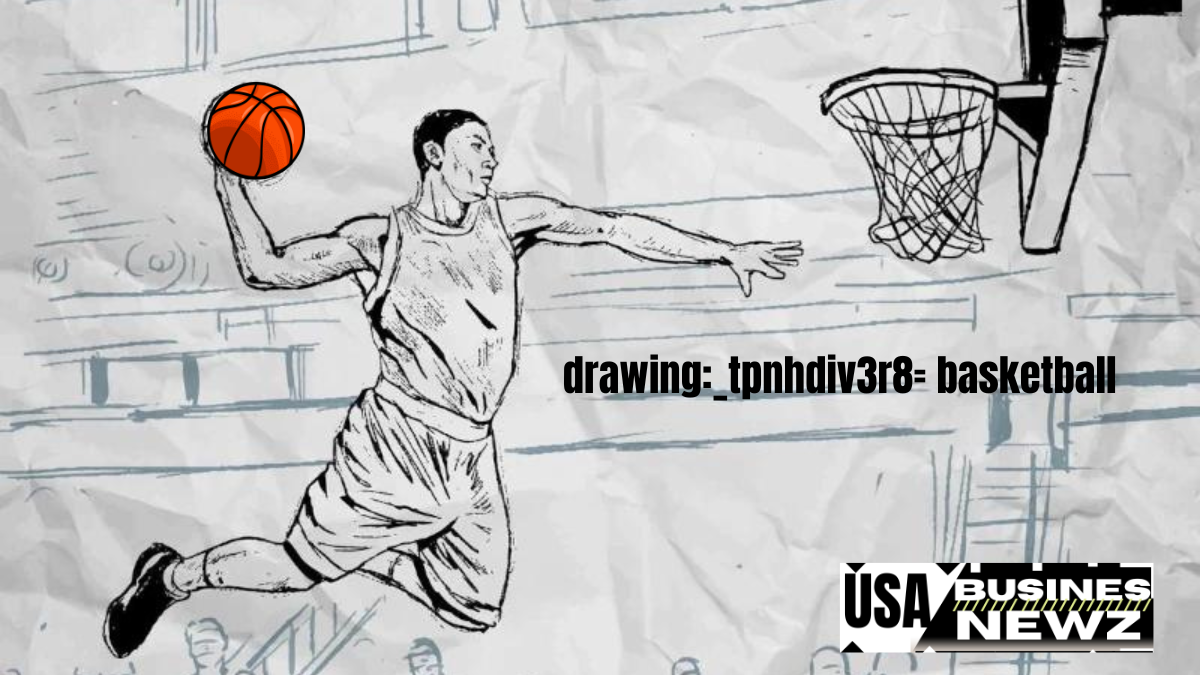Introduction to drawing:_tpnhdiv3r8= basketball
Are you ready to drawing:_tpnhdiv3r8= basketball your artistic skills to new heights? If you’ve ever wanted to capture the essence of a basketball in motion or create a stunning still-life piece featuring this iconic ball, you’re in the right place. drawing:_tpnhdiv3r8= basketball can be fun and rewarding, whether you’re an aspiring artist or just looking for a creative outlet. This beginner’s guide will help you easily slam dunk your way through the essentials of drawing basketballs. You canyou’ll bring that orange sphere alive on paper with the right tools and techniques! Let’s start this exciting journey into the world of drawing:_tpnhdiv3r8= basketball.
Basic tools and materials needed for drawing:_tpnhdiv3r8= basketball

To start your journey in drawing:_tpnhdiv3r8= basketball, gather a few essential tools. A good set of pencils is crucial. Opt for different grades to achieve varied line thickness and shading.
Next, invest in quality sketch paper. Look for something that can handle erasing without tearing easily. This will give you the freedom to practice without worry.
Remember,Don’t an eraser! A kneaded eraser works wonders for subtle highlights, while a standard one helps with mistakes.
You might also want to use fine liners or markers to outline your drawing:_tpnhdiv3r8= basketball later. They add depth and definition to your sketches.
Consider having reference images handy. Whether they’re pictures of real basketballs or action shots from games, they’ll inspire accuracy and creativity as you draw.
Understanding the anatomy of a drawing:_tpnhdiv3r8= basketball
To draw a drawing:_tpnhdiv3r8= basketball convincingly, it’s essential to grasp its anatomy. A standard basketball is not just a simple sphere; it has distinct features that define its form.
Start with the shape. Observe how the ball’s curves create dynamic lines. Notice the slight flattening at the poles—this gives depth and realism.
Next, focus on the surface texture. The pebbled leather creates small dimples that catch light differently across various angles. This detail adds interest to your drawing:_tpnhdiv3r8= basketball.
RememberDon’t the iconic seams! They run along specific paths and contribute significantly to how we perceive structure in art.
Consider proportions carefully. Visualize how a basketball fits within real-life contexts like being held in one hand or bouncing on a court surface.
Understanding these aspects will enhance your ability to depict this beloved sports symbol accurately.
Step-by-step guide for drawing:_tpnhdiv3r8= basketball
Start with a simple circle. For precision, use a compass or trace around a round object. This will be the foundation of your drawing:_tpnhdiv3r8= basketball.
Next, draw guiding lines through the center to divide it into sections. These lines help in placing the details accurately.
Now, add the signature grooves of a basketball. Draw one vertical line and curve it slightly at both ends for that authentic look. Then, create two horizontal lines that intersect with this vertical groove, mimicking how they wrap around the ball.
Once you have those guidelines, refine them by adding depth and dimension. Make the edges softer and give them slight curves to enhance realism.
Take a moment to assess your work before moving on to shading or texture enhancements. Each line should reflect careful observation of an actual basketball’s shape and design.
Adding shading and texture to your drawing:_tpnhdiv3r8= basketball
Shading and texture breathe life into your drawing:_tpnhdiv3r8= basketball. They create depth, making the basketball appear three-dimensional.
Start by identifying your light source. This is crucial for creating realistic shadows. Use a soft pencil to build up layers gradually. Light pressure can help you achieve softer gradients along the ball’s surface.
For texture, consider a basketball’s typical grip pattern. You can use small circles or lines to mimic these details on its surface. Emphasizing these elements will enhance realism.
Experiment with different shading techniques, such as hatching or cross-hatching, for varied effects. Each method brings its unique feel to the drawing:_tpnhdiv3r8= basketball.
Don’t forget the highlights! A well-placed white spot can suggest shine and roundness, further enhancing that lifelike quality. Mix it all together and watch as your drawing:_tpnhdiv3r8= basketballtransforms from flat to dynamic with these simple techniques!
Tips for adding movement and action to your drawing:_tpnhdiv3r8= basketball
Focus on dynamic poses to breathe life into your drawing:_tpnhdiv3r8= basketball. Capture the energy of a player mid-jump or in full sprint. This will convey motion effectively.
Use lines to suggest movement. Action lines can trail behind the ball or player, adding a sense of speed and urgency. Experiment with angles; drawing:_tpnhdiv3r8= basketball from below can make characters appear more powerful and intense.
Incorporate blurring techniques for fast-moving elements. Soft edges around the basketball during a throw add realism to your scene.
Explore exaggerated proportions, too. A longer arm reaching for a hoop creates visual excitement that enhances action moments.
Consider facial expressions. A fierce determination or joy captures the emotion of sportsmanship and competition, amplifying the overall impact of your artwork.
Conclusion: Practice makes perfect!
drawing:_tpnhdiv3r8= basketball can be both fun and rewarding. Anyone can create impressive illustrations with the right tools, a basic understanding of its anatomy, and some practice. As you experiment with shading and texture, remember that capturing movement adds life to your drawing:_tpnhdiv3r8= basketball.
Keep honing your skills through regular practice. Each attempt will bring new insights and improvements. Embrace the learning process; it’s all part of becoming a better artist in drawing:_tpnhdiv3r8= basketball.
